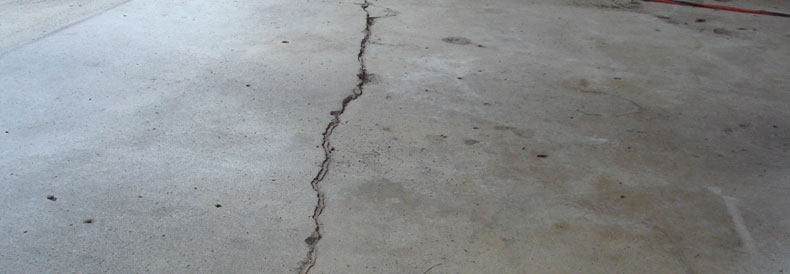for Concrete Crack Repair?


Shrinkage: As the excess water evaporates and the concrete hardens, it shrinks somewhat. From time to time, contractors may add too much water into the mix. This makes it easier to apply, but makes it more susceptible to cracking when it dries.
Weather: Extreme temperatures and sudden changes in temperature can cause concrete to cure poorly, which can lead to cracking down the line
Improperly placed relief joints: Relief joints are placed when laying concrete to make sure the slabs are evenly placed and relieve the pressure that can lead to cracking. If these are placed improperly, the concrete is further susceptible to developing cracks.
Freeze-thaw cycles: When the weather cools and heats up, it causes the moisture in the concrete to expand and contract. This causes cracks over time.



Any residue can be removed with the use of steam cleaning or high pressure washing
For the best results, the crack should be dry at the time of the procedure. If there is water seeping from the crack, locate the water flow’s source and shut it off.
Any water remaining in the crack can be removed with the use of compressed air.
Any coating or sealant that has been applied to the concrete must be removed so as to avoid the materials rising and causing a leak in the future

More epoxy is required: It may be the case that the crack is branching off or expanding beneath the surface, so you should continue to fill the void. This may also be a sign that the epoxy is running straight through and out of the other side of the crack. If this is the case, and the crack runs completely through and out of the other side and is unable to be sealed, then an epoxy injection for crack repair may not be possible.
Less epoxy is required: If less epoxy is required than initially thought, this will mean one of two things. Either the epoxy is not penetrating the crack properly before moving on to the next port, or the crack is simply shallower than was initially believed. An injection of a lower viscosity epoxy to some ports will show if the crack will take more epoxy, or alternatively heat the epoxy between 80 and 100F to reduce its viscosity and allow it to reach smaller areas.
Epoxy is not showing up at the next port but is flowing into the crack: Quite often the crack can branch off or expand underneath the surface. In situations such as these, continue to inject the epoxy. If the crack completely penetrates through the concrete and out of the other side, and the back of the concrete cannot be sealed off, spending more time injecting the epoxy will not force the epoxy to the next port. In situations such as these, the epoxy will be running out of the back and epoxy injection repair will not be a suitable solution.
